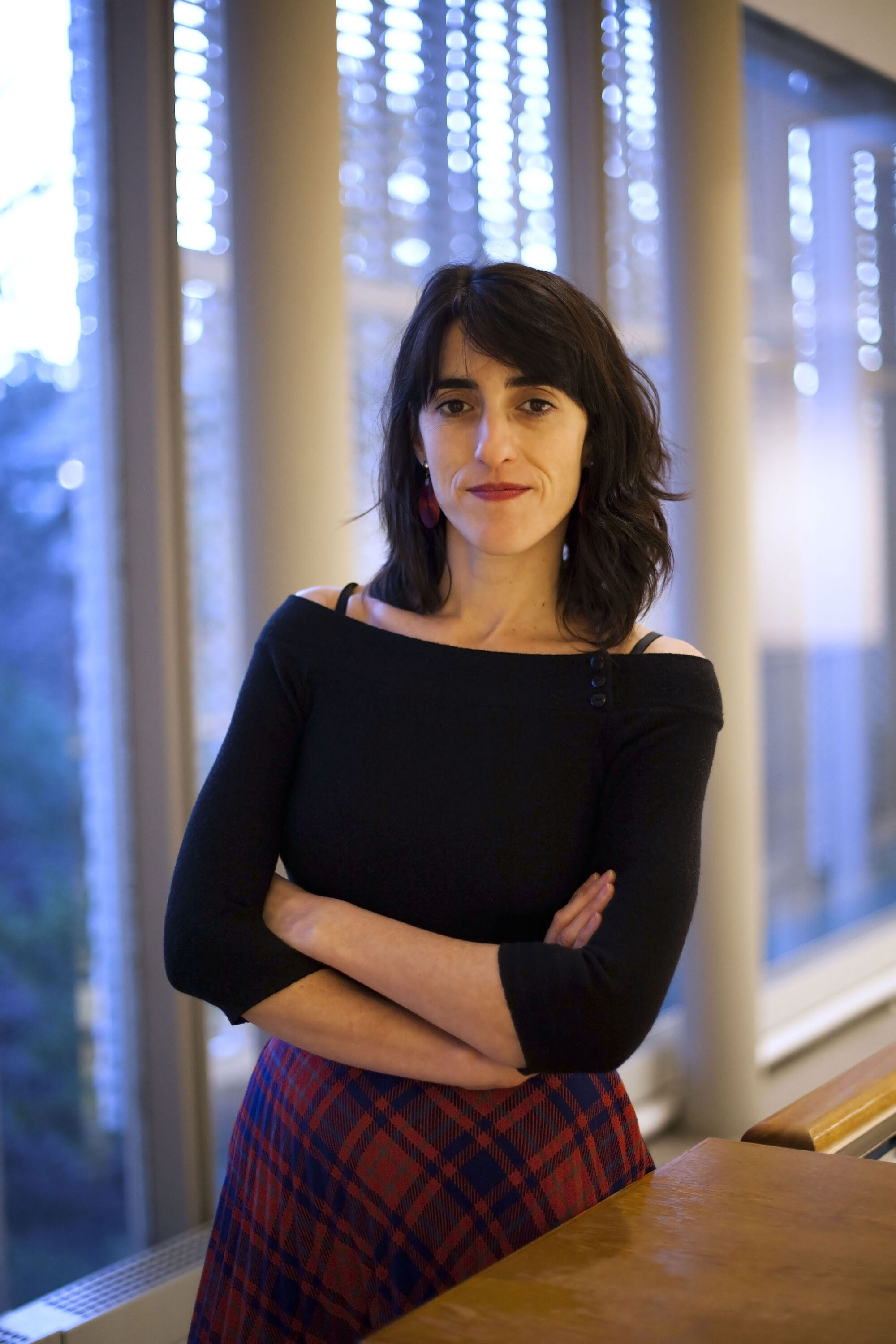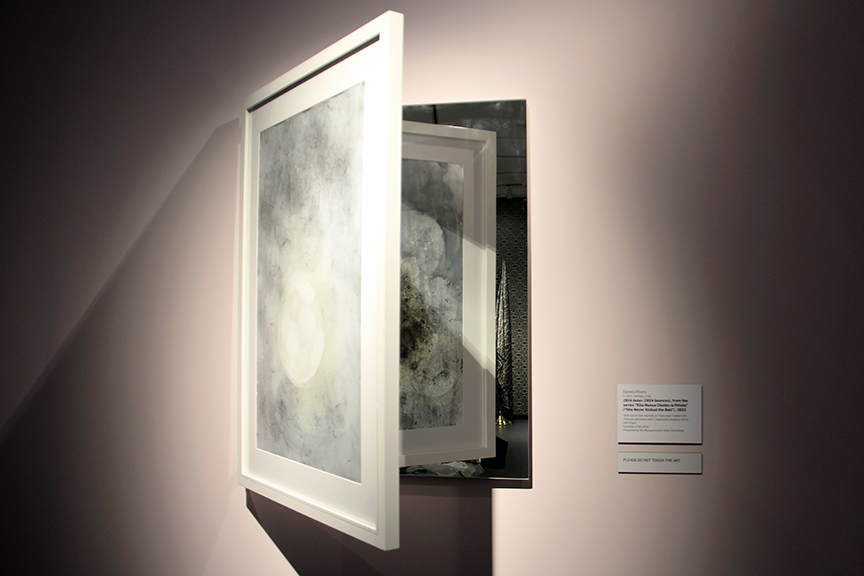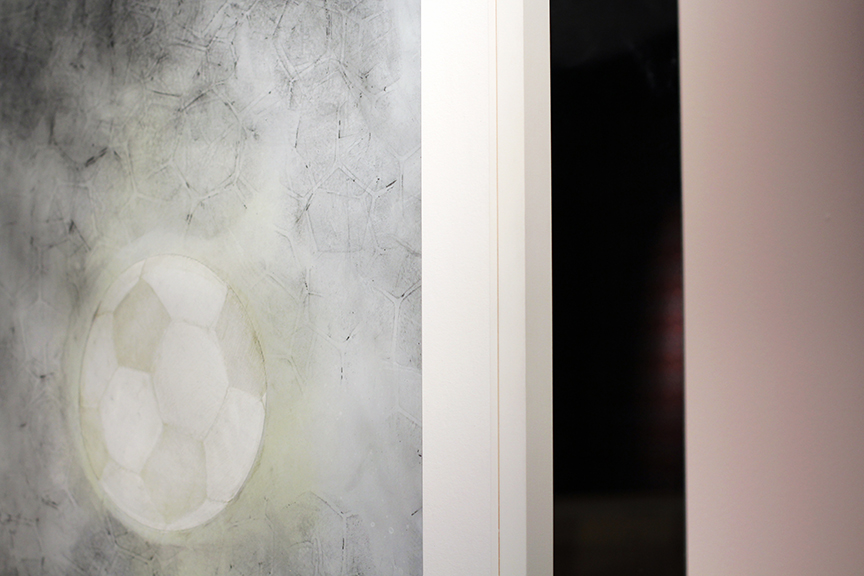The seventh installment of NMWA’s Women to Watch exhibition series, New Worlds, is presented by the museum with the integral partnership of our national and international outreach committees.
The exhibition showcases 28 contemporary artists who respond to our extraordinary times—the global pandemic, advocacy for social reform, and political division—by reimagining the past, presenting alternate realities, and inspiring audiences to create different futures. We spoke with some of the participating artists about their featured work and practice.
Artist: Daniela Rivera
Nominating Committee: Massachusetts State Committee

1. What themes does your work in New Worlds address?
My video work Ella Nunca Chuteo la Pelota (She Never Kicked the Ball) (2021) addresses themes of agency, collaboration, and political representation. The women of the Chilean mining town Chuquicamata were excluded from the social protections provided by the national mining company that employed their husbands. To organize for their own support, they met for coffee in each other’s homes. They asked for protective gear, professional training, and access to better medical care. After their request gained no traction, they approached Cobreloa, the town’s men’s soccer team. This team, formed by their husbands and sons, recognized them as the Cobreloa female branch. They never kicked the ball, but this recognition provided them with enough visibility to access political representation. This series is built on the tenacity of these women and the idea that freedom is found in the collective, not the individual.
2. Is this work representative of your oeuvre? How does it fit into your larger body of work?
It aligns with my work as an artist. My artistic practice is informed by a critical reading of history. As a visual artist trained in western tradition interpreted by the post-colonial countries of the Southern Cone, I am fascinated by the difference between the original cultural product and the information I received as an arts student in Santiago, Chile, during the eighties and nineties. These asymmetries did translate into new formal applications, many of which I interpret today as cultural consumption, subversion of hierarchies and traditions, and poetic attempts at resignification and cultural self-determination. These modes of approaching cultural production and cultural artifacts are at the center of my work. At a time of extreme tribalism and violent cultural and ethnographic categorization, I consider it crucial to challenge definitions and propose new meanings via collaboration and the re-examination of cultural traditions.

3. As an artist, what are your essential materials and/or tools for building a new world?
The process of learning and collaboration—and, of course, copper. Ella Nunca Chuteo la Pelota started with a community and a complex political history. Learning new perspectives, embracing these histories, and tilting the status quo through my work is the essential material to my practice. Copper threads itself through my work since this project, but I don’t commit myself to one medium or tool, and I let the relationships I build guide the work I make.
4. Did any books, music, film, news, or other art inform your work in this exhibition?
When I started to research the history of copper mining in the Andean region, I fell down a rabbit hole of information about abuses to human rights, labor, loss, archeological research, and the impact of industrialization in native communities. I was informed by the filmography of Patricio Guzmán, especially Nostalgia for the Light (2010). I was also informed by Gabriela Mistral’s writings, particularly her essay “Sobre el Oficio,” which centers around the relationship between labor and identity.
Additionally, the artistic practices of Chilean artists María Verónica San Martín and Máximo Corvalán-Pincheira and Mexican American artist Caleb Duarte are also influential to this project. Their artwork is responsible, socially conscious, and holistic in a way that I wanted to embody.

5. How have the events of the past several years—the global pandemic, increased advocacy for social reform, and striking political division—changed or challenged your practice?
My solo practice lost meaning during the pandemic. The impact of climate change, political division, extreme tribalism, and human rights abuses have turned my attention to collaboration, shared authorship and agency, and responsibility.
6. If you could travel to any time, past or future, where would you go? Why?
Honestly, I have never considered traveling to any other time. I feel I am where I must be, and I have no longing to experience anything but the present. It is here and now that I can participate and work for social justice, sustainability, and community building.
New Worlds: Women to Watch 2024 is on view at the National Museum of Women in the Arts from April 14 to August 11, 2024.
